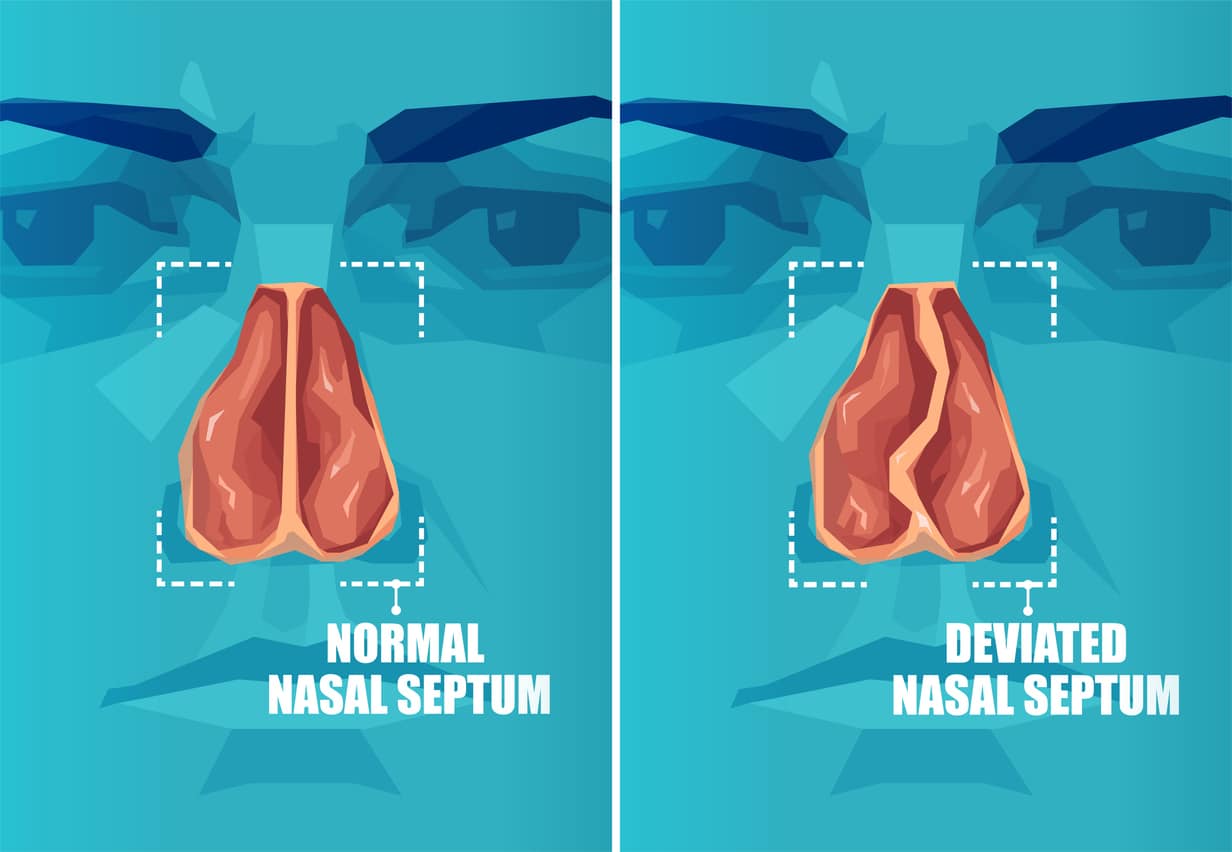Your nose has a thin wall of cartilage and bone that separates your nasal cavity into two halves. The wall is crooked for some people, a condition called a deviated septum. A deviated septum can be mild enough not to cause symptoms or severe enough to cause disrupted breathing, headaches, congestion and snoring.
Septoplasty is a common surgical treatment for a severely deviated septum.
How Does Septoplasty Work?

During a septoplasty, your ENT or sinus specialist will reshape your septum. The procedure is 30 to 90 minutes long and takes the following steps:
- Your specialist will make a small incision on one side of your nose and lift the thin membrane covering your septum
- They’ll reshape the bone and cartilage to fix the deviation
- They may remove parts of the bone or cartilage if they’re slowing airflow—a technique called turbinate reduction
- They’ll reposition the mucosa over the septum and insert splints or soft packing to hold the tissue in place during recovery. Alternatively, they may use dissolvable stitches to sew the tissue back together.
Most septoplasties are performed under anesthesia, so you’ll need to wait in the office until it wears off, and it’s a good idea to arrange a ride home ahead of time.
What Does Septoplasty Recovery Look Like?
After the procedure, you may experience a few temporary symptoms, including bloody drainage, congestion, swelling, ear fullness and a mild headache. Symptoms should clear within the first two weeks, but bone and cartilage healing will continue for several months.
There are a few care tips to employ during the healing process, including:
- Avoid blowing your nose for the first two weeks following surgery.
- Keep gauze in your nose until bleeding stops. If bleeding continues longer than a few days or requires hourly gauze changing, contact your sinus specialist immediately.
- Rinse your nose with saline.
- Clean any crusting around your nostrils with a cotton swab dipped in hydrogen peroxide and water. Avoid sticking the cotton swab in your nose.
- Take over-the-counter pain relievers as needed.
- Avoid spicy foods during the first two weeks.
- Rest at home for a few days before resuming any exercises. You might want to start with a light walk around Fort Collins City Park before jumping into heavy exercise.
Your sinus specialist will schedule a follow-up appointment one to two weeks after the septoplasty to check the healing and operation success.
Schedule Your Consultation
For more information about septoplasty or to determine if the procedure is right for you, contact Alpine Ear Nose & Throat PC today.